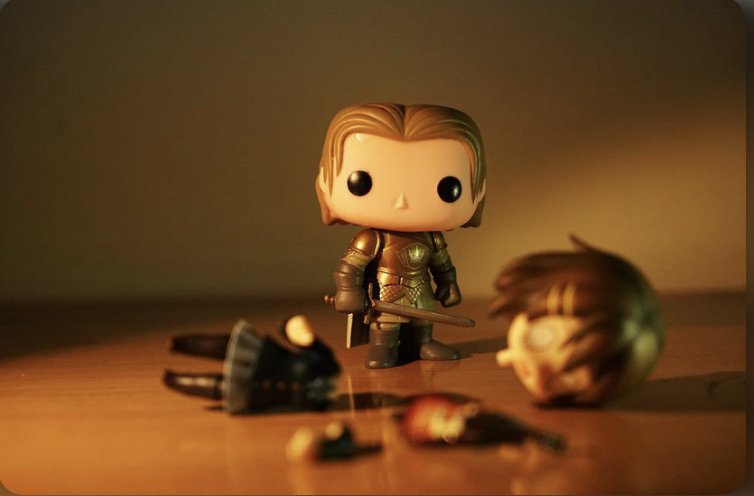There are very few television series that have had the same impact on pop culture over the last decade as Game of Thrones.
Read moreRanked: Steven Soderbergh’s Movies Since 2009
It’s arguable no director has transcended multiple genres the way the great Steven Soderbergh has, especially over the last decade. The prolific director has moved between psychological thriller, to drama, to comedy, all be it never allowing the films to lose that Soderbergh touch.
Read moreThe 10 Best Horror Movies of the 21st Century
These new original voices studied the formula of its great horror forebearers. After all, the cinematic horror genre, from its very roots in the ‘20s with German expressionism (Nosferatu) is akin to a deliciously twisted recipe that has been passed on from generation to generation; reinvented, both stylistically and socially, for the current anxieties of the day.
Read moreThe 10 Best TV Shows of the 2010s
Not only will this decade of peak television be remembered as the “golden age” of the small screen, but, these past 10 years, the lines were blurred between television and cinema. Cinematic auteurs such as David Fincher, Martin Scorsese, David Lynch, Steven Soderbergh, and Spike Lee all made the jump to the small screen with personal projects they had been trying to develop for years. The fact that television accepted them with open arms meant that the small screen was just as much a place for risky storytelling as the big screen. It was very hard to choose just ten selections from the past decade to make this case, but the following are the TV shows which I believe could stand toe-to-toe with the best movies of the decade.
Read moreThe 10 Most Shocking Movies of All-Time
Some movies push the envelope, while other movies tear up the envelope, put it through a shredder, and do so without worrying about how they will be perceived by the mainstream.
Read moreThe 10 Best Comedies of the 2010s
Starting in 2003, with the release of “Old School” then “Anchorman,” a comedy renaissance started with the boom of the Will Ferrell/Judd Apatow/Seth Rogen era (“The 40 Year Old Virgin,” “Superbad,” “Step Brothers” and “Walk Hard.”) Then, the immense success of 2009’s “The Hangover” and 2011’s “Bridesmaids,” which leads us to where we are now, which, while despite a few great chucklers having been released, most of the recent comedy releases this past decade have been safe “star-based” movies (think Kevin Hart or Melissa McCarthy).
Read moreThe 12 Best African-American Movies
It’s interesting to note that, despite a lengthy and rich history, starting with Oscar Micheaux’s 1920 silent “Within Our Gates,” African-American cinema was mostly known as a fringe genre until blaxploitation showed up in the ‘70s and made it a marketable commodity. And yet, it took close to 3 decades for one of the greatest films ever directed by an African-American filmmaker to see the light of day (Charles Burnett’s “The Killer of Sheep”).
Read moreThe 10 Best Scenes from ‘The Irishman'
It’s been nearly a month since Martin Scorsese’s “The Irishman” hit Netflix, and whether you think its Scorsese’s best, an instant classic or just plainly too long, it can’t be denied it has some of the greatest cinematic moments of the year, and in some cases, the decade.
Read moreThe 25 Best Movies of the Decade [2010s]
As the decade closes in, I’ve decided to make a list of the 20 best movies I have seen since 2010. To say that I have painstakingly been trying to refine this list over and over again would be an understatement. The general questions I set forth to ask were quite simple: which films left the biggest impression on me this decade? Which works of art transcended the medium and paved their way into my deepest subconscious? Which films will have a lasting impact in the years to come?
Read moreThe 10 Best Documentaries of the 2010s
This was the richest decade yet for non-fiction film. As technology further advanced itself into unpredictable and shape-shifting ways, so did the doc form. We now seem to be part of a generation that records just about everything, which has given documentary filmmakers worldwide a treasure trove of creative freedom to mold and shape storytelling narratives through the footage taken. And yet, that didn’t scare some directors from completely inserting themselves into their narratives. Films by Kirsten Johnson, Jafar Panahi and Laurie Anderson were as much about the artist directing as the topic being tackled.
Read moreRanked: All 8 Martin Scorsese Movies From the 21st Century
With “The Irishman” currently in limited release, and dropping on Netflix later this month, let’s look back on one of Hollywood’s most legendary director’s work since the turn of the millennia.
Read moreThe 10 Best Movie Performances of the 2010s
Today, we continue our decade series, where we recap the best cinema had to offer in the 2010s. This time, we tackle the best acting of the last 10 years by highlighting the actors and actresses who turned in the most iconic performances. The performers, six men, and five women, must have surely not known that their work would not only be remembered but would also be celebrated years after its initial release. Whenever art is created, albeit a painting, a written novella or acting performances, the artist rarely thinks about the effect his or her work will have on the zeitgeist years from now; however, the following 10 performances have turned into time-capsule worthy moments not just within the present decade at hand but will surely stand the test of time.
Read moreThe 10 Best Animated Movies of the 2010s
This last decade in animation brought a lot of technological advancement. Yes, Studio Ghibli's iconic Hayao Miyazaki entered retirement, only to announce he would soon make a comeback, but animators took over his mantle as lines were stretched out as to what was visually possible, with the use of both traditional and computer-generated techniques. The storytelling, however, was a little less risk-taking, with many of the very best films opting for traditional storylines and narratives. However, if in the past much of animation was designed to appeal to kids, the adults in the room were entertained as well this decade. There was less of a divide in animation appealing to both adults and children alike.
Read moreDenis Villeneuve's Movies Ranked
Denis Villeneuve is not a filmmaker who sees the light at the end of the tunnel. If you’ve ever seen any one of his movies you’ll know that there is a sense of dread and uneasiness to every frame, the feeling that nothing good will happen and that everything is just wrong. Yet, the 50-year-old director hasn’t exactly tackled melancholic stories in his career either: His movies have included child abductors, terrorists, drug lords, hitmen, high school shooters and depressed alcoholics. Yet since his American debut, Prisoners, starring Jake Gyllenhaal and Hugh Jackman, he has steadily but surely built up a following that is making him a reputable force to be reckoned with. That film’s polite but good reviews were transformed over the last few years into an undeniable cult following. The grisly murder mystery at the center of the story has typical B-movie tropes, but he has a knack for making a script better just by the way he films, paces, and directs. About this he says, “All my life, I’ve searched for good screenwriters; I love writing, but I’m not a good screenwriter and I take forever to complete a script. For the first time ever, I’m receiving screenplays from Hollywood that actually intrigue me. I had heard so many horror stories about foreign filmmakers going to Hollywood that got fucked by the system. Martin Scorsese warned me in fact that ‘You need to remain intact, that’s the most important thing.’ ” Here are 8 of his movies ranked with quotes from my reviews of those films.

1) Incendies
"With his fourth film, Denis Villeneuve has hit a new career high. Based on Wajdi Mouawad's stage play, "Incendies" is the firecracker we've been waiting for this fall. Political, angry and thoroughly engrossing, Villeneuve's film is one of the year's best. The film's central stories, taking place both in present day Montreal & the Middle East, are filled with corruption and violence as a brother and sister duo try to find out who their recently deceased mother really was. The torching and shooting of a bus filled with muslims bystanders, by christian radicals is the centerpiece of this tough unforgettablemovie. It's a sequence breathlessly shot and horrifying to watch in its authenticity. The way Villeneuve tells his story is original and visionary, his perfectly calibrated command of the frame is impressive ditto his middle eastern nightmare of a film that creeps up on you from its first frame to the last. I was also completely taken back by its final twisty revelation that only puts the icing on the cake. The film will more than likely find a comfort zone from both critics and audiences when it finally gets released in the States. Villeneuve hasn't really gotten the reputation he deserves south of the border and I think this film might just finally do it for him." — October 2010
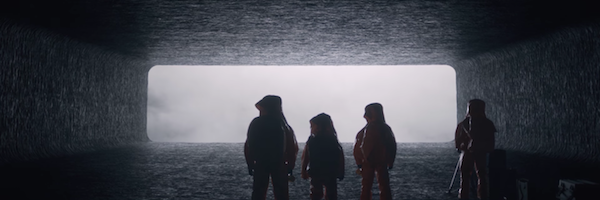
2) Arrival
"Toronto was a kind of homecoming for Canadian boy Denis Villeneuve whose “Arrival” had very successful showings at both Telluride and Venice just a week prior. Amy Adams plays Louise Banks, a linguist who is recruited by the military after enormous Alien pods show up across the globe. Many countries are prepared for war, but Louise believes that the visitors might actually be on earth for non-violent reasons. Adams, in one of her very best performances, gives a touching and rewarding performance in a film that feels like a better version of Christopher Nolan’s well-known sci-fi blockbusters. The sentimentality is somewhat stripped down for a more concrete and profound look at the ties that bind us all on earth. It’s a thought-provoking adventure that isn’t about war, but communication instead. Villeneuve once again proves to be the real deal. The 49-year-old Quebecois filmmaker is building up a solid, loyal fan-base that could one day rival Nolan’s. The fact that his next movie is “Blade Runner 2” only gets us more excited about his future." — September 2016
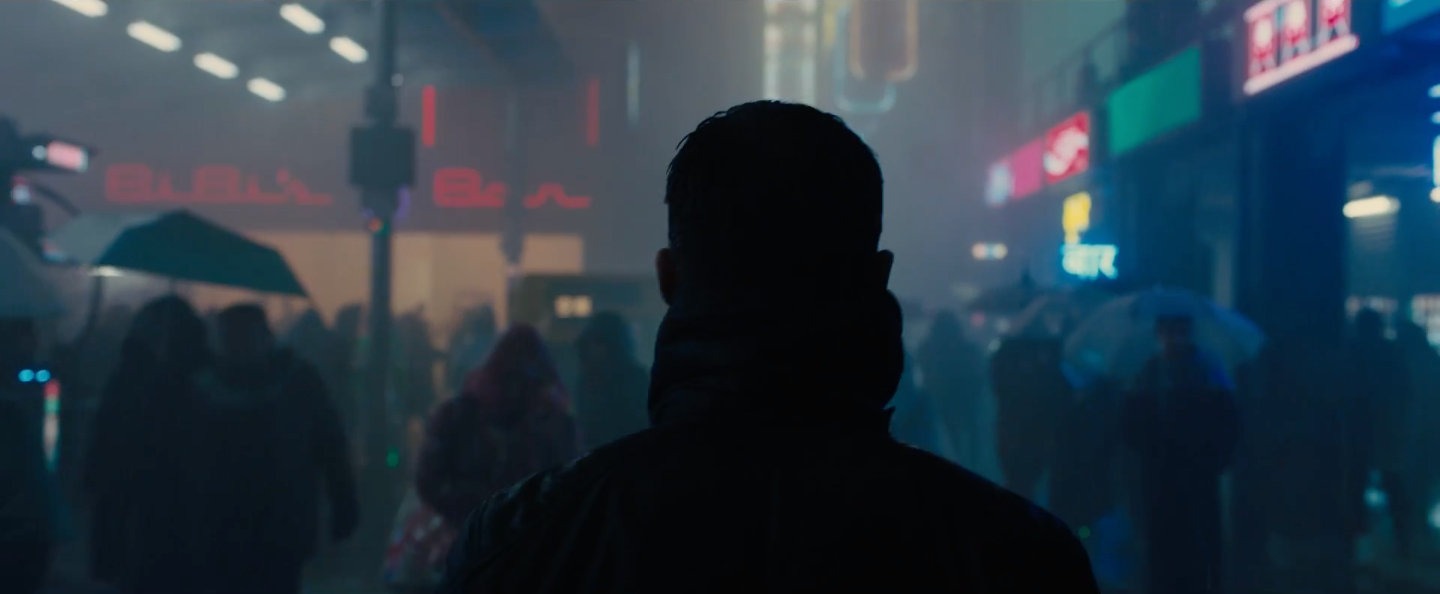
3) Blade Runner 2049
"The film, set thirty years after the original, has a quiet brooding lead character in Ryan Gosling's Officer K, who is a blade runner himself, seeking defacto droids that pose as humans. Just like Ford's Deckard, he's the best at what he does. Trouble comes in the form of an uncovered secret that could open a whole can of worms for the totalitarian government of the new world, which leads K on a quest to find Deckard, who's been missing for more than thirty years. It implicates K and a childhood memory that was implanted in his subconscious when he was created or did it actually happen? None of his American films have managed to capture the bloody, brutal brilliance of "Incendies," but, by golly, is this man on his way to that peak again, slowly learning the tricks of the trade to fully master his own auteur voice in a studio system lacking in, well, distinct and unique voices. "Blade Runner 2049" is Villeneuve gaining confidence in his ability to let a narrative breathe and have the confidence of the audience member to follow him along a deeply steeped, tip-toeing and risky narrative. It's 153-minute length, not counting the 11-minute credits, will surely be an endurance test for many. It's a film front-loaded with cinematographer Roger Deakins' beautifully lit frames, but beneath those frames lie secrets that will no doubt become more visible with repeat viewings, or at least that's what I hope because after a single viewing of "Blade Runner 2049" I can honestly say a lot of questions are still left unanswered." — October 2017
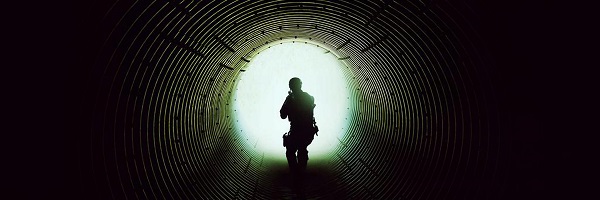
4) Sicario
"Sicario has been compared to Steven Soderbergh’s Traffic for its investigation of the Mexican drug cartel. That’s where comparisons should end. Sicario is a whole other beast, relying heavily on atmosphere, a pulse pounding score and Roger Deakins’ beautfully gritty photography. Emily Blunt, in the best performance of her career, is a SWAT team agent who gets promoted by a task force official (Josh Brolin, in a meaty role) to follow him through various danger zones of Mexico and learn about the nitty gritty goings on. Benicio Del Toro is a mysterious consultant hired to assist in the case, a man who doesn’t speak the whole truth and fully reveals himself as the story goes along. It’s his best role since 21 Grams and elevates the pulpy material to intensely real levels. Villeneuve shoots the whole thing like a pro, giving us epic wide screen shots that take advantage of the breathtaking locations and his always gloomy visual style. Taylor Sheridan’s screenplay (his first; he’s known primarily as a TV actor) has bumpy stretches, especially when the action takes a break, but the cast and crew elevate the drug drama into something artistic and twisty. It’s a good thing them that Sicario’s action sequences are refreshing, plentiful and the highlights as they encompass a wide array of claustrophobic feelings and put you right in the thick of the action, especially in a scene involving a raid inside a secret cartel tunnel." — September 2015

5) Polytechnique
"The Polytechnique school shooting in Quebec was still a big deal many years after it happened; it affected a generation and Villeneuve was one of those people. Shooting a film about the tragedy was a daunting task, and the film he made was not without controversy in Canada. During a class, a gunman shot 28 people, killing 14 women, before committing suicide. He began his attack by entering a classroom at the university, where he separated the male and female students. He told the women that he hated feminists, claiming that he was “fighting feminism” and calling the women “a bunch of feminists.” He shot all nine women in the room, killing six. He then moved through corridors, the cafeteria, and another classroom, specifically targeting women. ”Polytechnique is an organic film, a beast. The film is alive.” The film jumps back and forth in time, meditatively trying to find some peace with the tragedy. Villeneueve’s film tries to tackle the human cost of gender warfare and comes up with varying but troubling answers. Think Gus Van Sant’s Elephant, but French-Canadian. Shot in beautiful black and white by Pierre Gill, it’s an astonishing statement by a filmmaker who wants his voice to be heard. It justly won the Best Picture Genie award (the Canadian equivalent of the Oscars), his second one after 2008’s Maelstrom triumph. The following year he triumphed again with Incendies, winning his third Best Picture Genie." — October 2008

6) Prisoners
"My first day started with a screening of Denis Villeneuve’s “Prisoners” starring Hugh Jackman, Paul Dano, Terrence Howard, Octavia Spencer and Maria Bello. An incredible cast having a go at a screenplay that was on the “black list” for the longest time. The film will get many comparisons to David Fincher’s “Zodiac”. An understandable comparison since this is a 150 minute tale about missing kids and the obsessed people trying to solve the case. The obsessed are Jake Gyllenhaal as the lead detective and Hugh Jackman as the up-to-no-good father of one of the missing children. Unlike “Zodiac” Villeneuve’s film doesn’t manage to get you as obsessed about the case as its main characters. The screenplay is also nothing new, we’ve all seen this before but the twists and turns keep the story going. It helps that Director Villeneuve has a great visual flair, as he showcased in the Oscar nominated “Incendies” in 2010. Jackman, fresh off his “Les Miserables” nomination, could get a second nom for this one. He delivers a passionate, relentless performance, easily the best work he’s ever done."

7) Maelstrom
"On a personal note, I lived through the Montreal film scene when Villeneuve, Jean-Marc Vallee, and an 18-year-old Xavier Dolan among others, revolutionized French-Canadian cinema, and in the process gave themselves a shot at the Hollywood studio system. It was a very exciting time, but it was always Villeneuve that I kept an especially close eye on. People who saw his movie Maelstrom back in 2000 knew this was a talent to watch. The film, narrated by a doomed fish, features a career-making performance by Marie-Jose Croze as a depressed, suicidal woman who gets romantically linked to the son of the man she killed in a hit and run accident. The style was grimly unique and had a surrealist aspect to it that was almost too frightening to watch. Or maybe it was just the images Villeneuve conjured up with his camera – he could find the most basic looking detail in a frame and accentuate its impact just by the way he positioned a camera or had the cinematographer light up the scene. “It’s strange, when I finished Maelstrom I told myself, no more movies with a female lead. My first three films had that. Yet with my following film, Polytechnique, I made a film about the female condition and Incendies, the Middle East female. It just seems like women inspire me and that’s a good thing.” — June 2000

8) Enemy
“Doppelganger films have been big at TIFF so far. Director Denis Villeneuve -on a roll already with “Prisoners”- brought us two Jake Gyllenhaal’s with “Enemy”. Gyllenhall plays a Toronto professor that finds out he has an exact look alike living in the same city. It’a film very much inspired by Cronenberg but that also lets Villeneuve bring his own voice to the picture. This is sexy, smart, mysterious filmmaking at its best. The other doppelganger film had Jesse Eisenberg going insane with the appearance of his doppelganger. Directed by Richard Ayaode (Submarine) “The Double” is a dark comedy that fizzled out at its end but has shades of Terry Gilliam’s “Brazil” throughout its running time."
All 19 movies with an F CinemaScore rating
Darren Aronofsky's "mother!" received a rare F on CinemaScore, which has repopularized the movie grading system research company.
CinemaScore
is a
firm based in
Las Vegas and surveys
film audiences to rate their viewing experiences with letter grades as they are leaving the theater. The results are usually published in the latest issue of Entertainment Weekly. Just to give you an idea of how rare it is for a movie to receive an F, only 19 movies have received that letter grade since 2004.
Looking at the titles below I can already count 7 that most definitely don't deserve a negative letter grade and are, in fact, recommendation-worthy flicks.
These are the 19 movies that garnered an F grade score:
Alone in the Dark
The Box
Bug
Darkness
The Devil Inside
Disaster Movie
Dr. T and the Women
Eye of the Beholder
Fear Dot Com
I Know Who Killed Me
In the Cut
Killing Them Softly
Lost Souls
Lucky Numbers
mother!
Silent House
Solaris
The Wicker Man
Wolf Creek
How many of these shouldn't be on the list? Let us know in the comments below.
11 Legendary cinematographers who have never won an Oscar
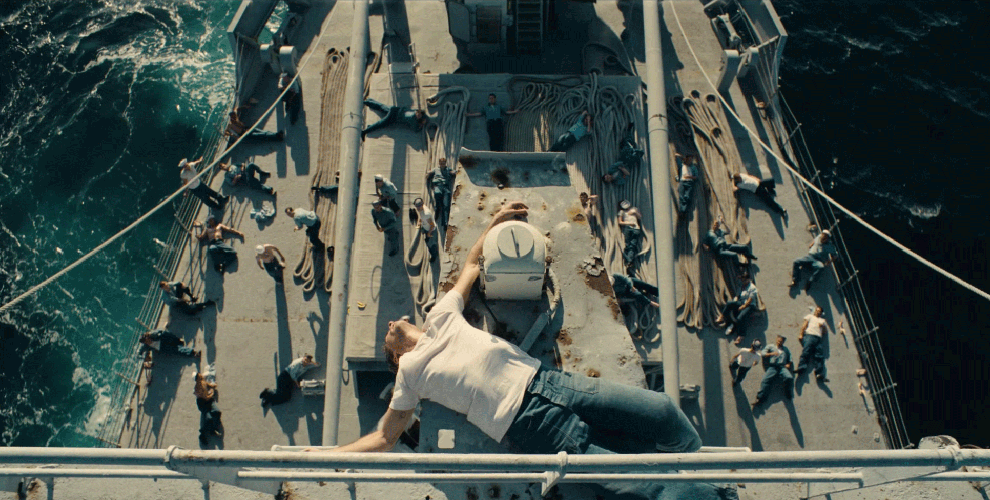
Note: This was originally written by yours truly for IndieWire
The inclusion of Raoul Coutard has not been removed despite his recent death. It's a travesty that he never won an Oscar, but, then again, what exactly is the point of winning an Oscar ? Every cinephile knows that Roger Deakins, a legendary cinematographer, who finally won in 2017, was nominated 13 times before finally winning.
Sadly, Deakins was not the only legendary cinematographer to have not won an Oscar — some haven’t even gotten nominated in their lifetime — which is why we narrowed these surprising snubs down to a list of 11 cinematographers who are still alive, but have never won. The late great Gordon Willis, who sadly passed away recently, never got his due and was instead awarded an honorary Oscar not too long before his passing away. Douglas Slocombe, who passed away just yesterday, was also nominated for three Oscars, though he never picked up a little gold man of his own.
Roger Deakins
This legendary cinematic figure will eventually win an Oscar, right? After 13 (!!) nominations, Deakins is still winless. Chances seem high that he’ll lose out this year to Emanuel Lubezki, who basically gave us one of the greatest photographed movies of the 21st century with "The Revenant." However, Deakins’ work, although less showy than Chivo’s, is far more difficult to achieve in its subtle, more nuanced manipulations of color. He’s a total pro, warranting inclusion on every "Greatest Cinematographers of All-Time" list he shows up on (and will show up on in the future).
Known For: "Barton Fink," ""Fargo," "The Big Lebowski," "O Brother Where Art Thou," "The Man Who Wasn’t There," "No Country For Old Men," "A Serious Man," "True Grit," "Skyfall," "Sicario," "The Shawshank Redemption," "Kundun."
Nominations: 13
EDIT: Finally won in 2017 for “Blade Runner 2049”
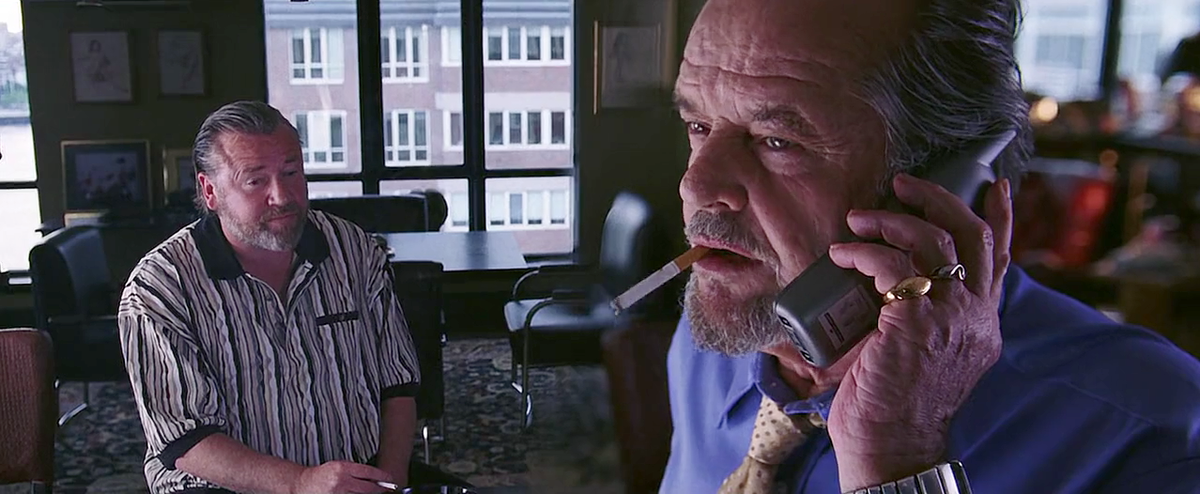
Michael Ballhaus
Michael Ballhaus’ work on Rainer Werner Fassbinder’s "Along" is enough to get him on this list — really, any of the 16 films they worked on should guarantee him a spot here — however, the main reason why Ballhaus has become such a legend is the work he created with Martin Scorsese during the second half of his career. He became well known for his 360ᵒ tracking shots and used it to its greatest effect in 1990 with Scorsese’s classic "Goodfellas." How he did not win for that film is still dumbfounding, especially considering that Dean Semler’s sub-par work in "Dances With Wolves" was rewarded instead. Although still technically "active," Ballhaus recently announced that he was suffering from glaucoma and was slowly losing his eyesight. For someone who is so visual, it’s heartbreaking news and it unfortunately seems to be the end of a legendary career.
Known For: "After Hours," "Broadcast News," "The Last Temptation of Christ," "The Fabulous Baker Boys," "Goodfellas," "The Age of Innocence," "Quiz Show," "The Departed."
Oscar Nominations: 3

Rodrigo Prieto
Rodrigo Prieto is a modern-day photographer who deserves more recognition than he’s been given. He was Alejandro González Iñárritu’s go-to guy until he went the Chivo route. He also illuminated Martin Scorsese’s glossy "The Wolf of Wall Street" with all the gritty, sleazy glamour needed. Hailing from Mexico, he is just as responsible for the Mexican new-wave as any of the filmmakers involved. Don’t be fooled by his aesthetically pleasing lenses; there are a ton of subtleties lying underneath the style. Directors such as Spike Lee, Ang Lee, Pedro Almodóvar, Oliver Stone and Martin Scorsese have all called him up for their films. In fact, Scorsese’s latest "Silence" was shot by Prieto in Japan and might just be his shot at a second nomination.
Known For: "Amores Perros," "8 Mile," "The 25th Hour," "21 Grams," "Brokeback Mountain," "The Wolf of Wall Street," "Argo."
Oscar Nominations: 1
Christopher Doyle
Christopher Doyle’s career has been very interesting, to say the least. Sure, he’s won awards at Venice and Cannes, but this Australian-born cinematography wizard had a hell of a life even before that; he was herding cows in Israel, was an oil driller in India and even became a doctor in Chinese Medicine in Thailand. In the late ‘70s, he learned Mandarin and a few years later got a gig as cinematographer for the late great filmmaker Edward Yang’s "That Day on the Beach." His love for high saturation and splashes of color fills every frame he works on. He’s known as the go-to photographer for directing master Wong Kar-Wai’s greatest films, including "In the Mood for Love," quite possibly the greatest photographed film of the aughts. Their partnership has sadly come to a standstill with ill-tempered Doyle claiming their critically acclaimed film "2046" was "unnecessary in retrospect." Ouch.
Known For:"2046," "In the Mood for Love," "Hero," "Chungking Express," "Paranoid Park," "The Limits of Control," "Happy Together."
Oscar Nominations: 0

Michael Chapman
This is the guy who photographed "Raging Bull," enough said. You’re probably asking yourself, "How the hell did he not win that year?" Well, Geoffrey Unsworth won instead for "Tess." No disrespect to Mr. Unsworth and his fantastic photography for his Roman Polanski epic, but Chapman’s work in "Raging Bull" is legendary. His use of black-and-white might be the definitive post-color statement of the medium, and the way he shot those boxing matches was, pardon my pun, a knockout. Even if he hadn’t done "Raging Bull" it would still be an impressive career. Chapman has had a huge influence on modern-day filmmaking, and his work in the ’70s alone would be reason enough to award him the golden statuette. Now 80 years old, he hasn’t photographed a film in a decade.
Known For: "The Last Detail," "Taxi Driver," "The Last Waltz," "Raging Bull," "The Fugitive."
Oscar Nominations: 2

Raoul Coutard
The visual innovator of the French "Nouvelle Vague," Coutard has shot 75 films in his illustrious career. Now 91 years old, he will always be remembered as Jean-Luc Godard’s go-to guy, photographing practically all of JLG’s Nouvelle Vague work from 1959-1967. This meant lots of black-and-white films, and only a handful in color. During this era, he always insisted on using natural lighting for his work. Coutard’s inventive use of the hand-held camera was incredibly important in the advancement of filmmaking. In fact, his visionary work with the hand-held is just as innovative as Orson Welles’ extended use of deep focus in "Citizen Kane." One can’t also forget his post-Nouvelle Vague work with Costa-Gravas and his incendiary work with his masterpiece, "Z."
Known For: "Breathless," "Jules et Jim," "Contempt," "Bande à part," "Alphaville," "Z."
Oscar Nominations: 0
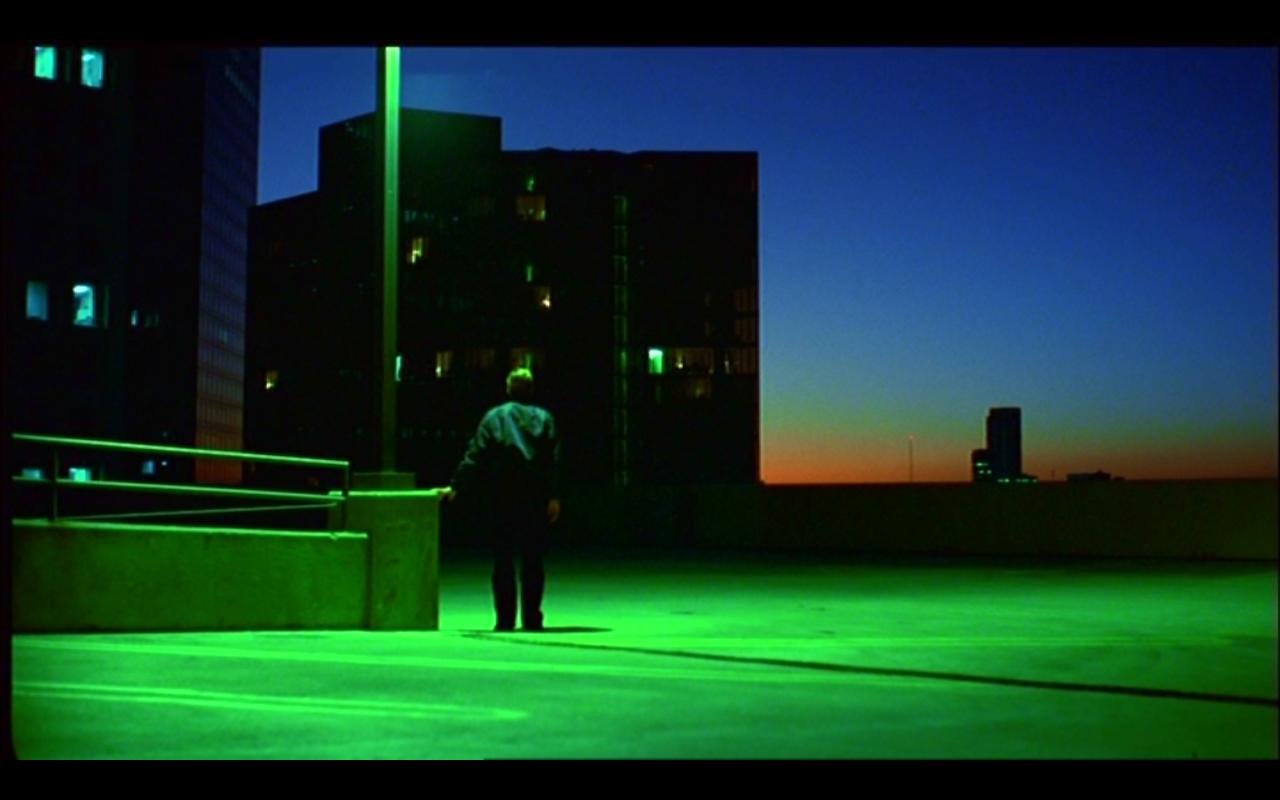
Robby Muller
If you’re associated with Lars von Trier’s movies, chances are you just won’t be the Academy’s cup of tea. This of course cannot erase the greatness of your work; in fact, in many instances, it enhances it and makes the films age like fine wine. Robby Muller’s work with von Trier is — of course — astonishing. So is his work in Jim Jarmusch’s best shot movie "Dead Man," which uses beautiful Western-infused black-and-white photography. It is, however, his work with Wim Wenders for which he will be forever known, including "The American Friend" and "Paris, Texas," the latter of which unforgettably went through the heart of the American landscape. Both films are polaroid snapshots of America, with the most beautiful use of green, a Muller staple that has reappeared in much of his work.
Known For: "The American Friend," "Paris, Texas," "Repo Man," "Breaking the Waves," "Dead Man," "Dancer in the Dark."
Oscar Nominations: 0

Darius Kohndji
This Tehran-born camera genius has worked with some of the greatest directors in the world. He was discovered when shooting a famous Nike ad with David Fincher, which landed him a job as cinematographer of "Seven," a film that some say shaped the way drama would be shot in the 21st century. Khondji used simple camera approaches for the film and was highly influenced by — of all things — the TV show "COPS," which inspired him to use tricks like a camera peering over a shoulder from the backseat. As seen in "Seven," Khondji is known for using composition to create a sense of tension and dread. One can also not forget his colorfully whimsical genius in Jean-Pierre Jeunet’s movies and Woody Allen’s European love letters, especially in "Midnight in Paris," where his use of warm colors and limited camera movements gave the film its infectious glow.
Known For: "Delicatessen," "The City of Lost Children," "Seven," "The Beach," "Midnight in Paris," "Amour."
Oscar Nominations: 1
Jeff Cronenweth
Although "Seven" is very much a "David Fincher" movie, his very recognizable visual palette really started when he hired Jeff Cronenweth as his cinematographer for "Fight Club." If the name sounds familiar, it’s because Jeff is the son of Jordan Cronenweth, one of the most famous of modern cinematographers, especially known for his work on "Blade Runner." Jeff Cronenweth has a unique, very identifiable style with dimly-lit, close-up, longshots which tend to show a very shallow depth of field. To take away Cronenweth from a Fincher film would be akin to Stanley Kubrick not having John Alcott for "A Clockwork Orange," "Barry Lyndon" or "The Shining": Unfathomable. Cronenweth’s work has resulted in two Oscar nominations, but no wins. As for his non-Fincher work, check out "One Hour Photo," in which Cronenweth worked with director Mark Romanek to create a visual masterpiece.
Known For:
"Fight Club," "One Hour Photo," "The Social Network," "The Girl With The Dragon Tattoo," "Gone Girl,"
Oscar Nominations: 2

Edward Lachman
A German Expressionism expert, Lachman is a master at what he does. He also has the distinction of being the last cinematographer Steven Soderbergh used in his film career, which seemed to have a profound influence on the filmmaker’s later films in which he handled photography himself. In those films, Soderbergh used Lachman’s clear and precise hand-held camera techniques from "The Limey" and "Erin Brockovich" to fashion up a style that would distinguish the latter part of his career. Lachman’s greatest achievement would come a couple of years later when he started a legendary partnership with filmmaker Todd Haynes. Their Douglas Sirk-influenced melodrama, "Far From Heaven," was an astonishing work of art, where Lachman’s German Expressionism background was on display with his use of light to depict the inner emotions of the characters; he made their emotions burst out on the screen using expressive color.
Known For: "The Virgin Suicides," "Erin Brockovich," "The Limey," "Far From Heaven," "I’m Not There," "Carol."
Oscar Nominations: 2

Tak Fujimoto
Tak Fujimoto was one of two cinematographers who shot Terrence Malick’s landmark 1973 film "Badlands." You’d think that would be his big break, but being the camera operator for “Star Wars: A New Hope" in 1977 was really what opened doors for him. He is also Jonathan Demme’s in-house cinematographer, with their relationship starting way back in 1974 with "Caged Heat." Fujimoto has no Oscar nominations, not even getting recognized for his astounding work in Demme’s 1991 masterpiece, "The Silence of the Lambs." He is known for his striking old-fashioned visuals using on-set lighting and not relying on post-production effects. Quite a distinctive approach, especially in 2016.
Known For: "Badlands," "The Sixth Sense," "The Silence of the Lambs," "Philadelphia."
Oscar Nominations: 0
10 Strange All-Time Favorite Movies Of Great Directors
There were a lot of interesting comments when I posted the all-time best lists of some of the greatest directors of all-time (click HERE). The most recurrent detail people kept noticing from was how Michael Mann listed "Avatar" as one of his 10 greatest films of all-time. Eclectic choice, right? Well, I researched and found these other 9 nuggets. Some of these are much worse than Mann's praise of the 2009 James Cameron mega-blockbuster.
Alfred Hitchcock - "Smokey and The Bandit"/"Benji"
Martin Scorsese - "The Exorcist II: The Heretic"
Paul Thomas Anderson - "Men In Black III"
Nicolas Windig Refn - "My Life as a Dog"
15 Great Modern-Day Movies Shot in Black & White
Since the 1960s, movies shot in black and white have practically become extinct. The number of films shot in black and white has decreased every successive decade since then. And yet, sometimes a movie demands to be shot without color to capture a certain kind of mood or tone that color would otherwise fail to get. In the case of the following list, "modern-day" means anything produced after 1970, which is when the decline really started happening. The following 15 examples are further proof that black and white will never die, as long as there are directors and DP's out there willing to value and acknowledge its importance.
Read more10 Best Films of the Half-Decade (2010s)
This decade has so far been a transitional decade for movies. We are living in an exciting, confusing time where superhero movies, sequels and popular book adaptations are becoming the foundation at the box office. If the notion of an original, creative, idea seems to be lost and forgotten, there are still – now more than ever – filmmakers pushing the norms and boundaries of what a movie can be. Filmmakers like these are few and far between, but they need to exist to make movies further progress and evolve just like they have in past 100+ years. To me, the following ten movies represent the most important of the decade thus far. They are the movies have marked my mid-decade, the movies I feel have further advanced the cinematic medium. As always, I write articles such as these to get the readers to chime in with their own picks. Looking forward to reading them.
1) The Tree of Life
Terrence Malick’s “The Tree Of Life” is a mosaic of a film that might test the limitations of its audience, but more importantly, the cinematic medium’s limitations. No matter what faults you may have with Malick’s movie, you cannot deny the sheer chutzpah and originality that went into its creation. There has never been anything quite like it and I highly doubt there ever will be. Malick tries to transcend the boundaries of life itself by trying to find a kind of meaning. This is his search for transcendence, in the little moments that make us and shape us. Death, mourning, rebirth, transcendence are just a fraction of the themes being tackled here. The mainstream might not have warmed up to the film’s non-linear narrative; for the rest of us, the symposium of abstract shapes and colors that pop our eyes out on the screen is just what the doctor ordered. This is the greatest cinematic experience of the decade.
2) The Master
P.T Anderson’s masterpiece is almost unexplainable. A reinvention of the cinematic language with a never better Joaquin Phoenix. The backdrop is scientology, but that’s only the backdrop for a much more complex movie. The surrealistic nature of the film was a hint for things to come in the Anderson cannon – “Inherent Vice”, anybody?- but here was a movie that had the best director of his generation at the peak of his powers, using scientology as only the background for bigger more complicated themes. I was more than riveted. Bold, innovative and infuriating, “The Master” is a landmark movie, but one that will likely divide its audience in half. Too bad, I was hypnotized by almost every single frame of its puzzling, schizophrenic narrative.
3) Margaret
“Margaret” is an absolute masterpiece. It thematically is going for the tone of a grandiose opera, but in a modern day context, filtered through the emotions of a teenage girl associated with a tragedy she witnessed and felt responsible for. It expresses the emotional teenage mind-set like no other. Every performance is astounding and every character in it so compelling and fully-realized. There’s no doubt in my mind that if this movie hadn’t been tangled up in lawsuits years ago, Anna Paquin surely would have been winning many awards for her performance. It’s such a shame that a movie of this size and scope was overlooked. Director Kenneth Lonergan asked friend Martin Scorsese for some help in the editing room and what you ended up getting was a movie that could not be explained easily and has only gotten better with time.
4) Uncle Boonmee Who Can Recall His Past Lives
Grasping a film such as this one may require some major attention from the viewer, and even when the attention is there, frustration may come about as a result of the film’s abstractedness and non-linear narrative. This is all not too surprising when you consider Apichatpong Weerasethakul’s filmography and his constant acknowledgment of nature and the way it binds to us as human beings. Have I lost you yet? Snoozing? That’s how some folks might react when watching “Uncle Boonmee Who Can Recall His Past Lives”. Coming out of the screening I attended, there was a kind of head scratching vibe in the air. It was as if Weerasethakul’s film had not only confused the general public, but actually angered them in frustration with what they had witnessed. I dug it the its mysterious setting and its dream-like episodes. If you’ve seen “Tropical Maladay” or “Syndromes and a Century” you know just how special this guy is.
5) A Separation
Filmmaker Asghar Farhadi’s indisputably great “A Separation” is the portrait of a country in turmoil. Just like the marriage depicted, it is constantly caught in the politics and restrictions the society offers. In one memorable scene, a man tells his daughter to speak Arabic as opposed to Farsi. In another telling moment, a girl’s school textbook recalls a time in the country’s history when the only two classes that existed were “royalty” and “everybody else”. Every person involved in the trial of “A Separation” has the best intentions and their own honorable values to go by. It is the most truthful and unbiased depiction of Iran I have seen this decade. The characters in Farhadi’s film live their lives according to the same religion and guidelines that are asked for them to obey. Yet, in the end it is only our own personal experiences that can provide us with the moral compass for the story.
6) Under the Skin
What Glazer has accomplished here is quite remarkable and shouldn’t be forgotten. He’s made a picture that defies all the rules and, just like most films on this list, has reinvented a new kind of language. He showed real promise with his first film “Sexy Beast” back in 2000, a cerebral and intense film that paved the way for Ben Kingsley’s best performance. He followed it up with “Birth”, which was kind of all over the place and not as successful as I wanted it to be, but now he’s really surprised me with this one, an out of left field vision that stuns. More than two years after having seen it I still can’t get the damn thing out of my head. Its originality and absurdity is what I love the most about it, and of course Johansson, who is just perfect for the part of a murderous, seductive alien, was the perfect casting choice.
7) Holy Motors
Leos Carax. You have to give it to this wildly imaginative filmmaker. He’s allergic to formula and refuses to adhere to the norm. In this thrilling, visionary, frustrating, exhausting and masterful film, he decided to give a poisonous valentine to the cinema, splitting his film into a bunch of different genres. Episodic in nature and more than eye-opening, Carax gave us something we’ve never seen before: a surreal nightmare of the past, present and future of cinema. With unusual acting chameleon Denis Lavant by his side, this was a movie in which anything could happen, in which any image could get juxtaposed with any other. There is no three-act structure built upon a tired, overplayed premise. Carax pushes, pushes and pushes until he finds the existential, surrealistic nirvana he’s been looking for throughout the movie with a simple but awe-inspring final image that is as haunting as it is ridiculous.
8) Black Swan
Taking a cue from Kanye West’s 2010 album, this is Director Darren Aronofksy’s Beautiful, Dark, twisted fantasy. Natalie Portman gave the performance of the year in a film that was more than just about ballet; it was about the boundaries an artist had in order to push his or herself to the very limits of their art. The same could be said of Aronofsky, who’s never adhered to the conventional or acceptable. A potent, poisonous child of Emeric Pressburger/Michael Powell’s “The Red Shoes” and David Lynch’s Mulholland Drive”, this was a campy, visionary, extraordinary mess that turned into the film that confirmed the filmmaker was the real deal.
9) Inside Llewyn Davis
There was a hint of reflective existentialism in the Coens’ Best Picture winner “No Country For Old Men”. Those kooky brothers were maturing before our very eyes and we had no idea what was to follow. “A Serious Man” was unlike any movie they’ve ever done: autobiographical, philosophical and damn near apocalyptic. “Inside Llewyn Davis” is where the Coens, the thinkers, make the masterpiece they’ve been hinting at this decade. A meditation on failure which just so happens to have as a backdrop the 1960’s Greenwich Village New York folk scene. This is the scene right before Dylan, when Folk was still square and the struggles for the artists were very apparent. Our Llewyn Davis doesn’t want to sell out, sticking to his artistic integrity and preferring a life without money than to sell himself to the devil. If only we had more artists like him today.
10) The Social Network
A film such as “The Social Network” relies on characters more than plotting. The characters populating the film stay etched in your head way after the film is done, which is in fact the highest quality of the film. There is an almost irresistible vibe created; Fincher uses low lit cinematography to enhance the dreary atmosphere happening throughout. The hallways of Harvard feel cavernous and nightmarish, whereas the look and portrayal of University life is nothing short of condemning. Although the movie can be seen as an entertainment first and foremost, the substance that drives its themes home is very apparent. After a second, third and even fourth viewing of David Fincher’s masterpiece, I discovered new things that might not have seemed as obvious or apparent the first time around. “American Beauty’s” advertising campaign told us to “look closer; the same goes for “The Social Network”.





